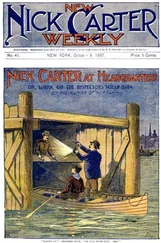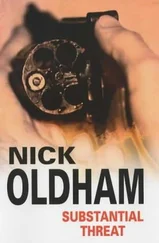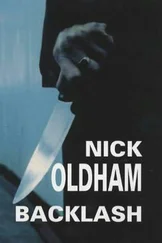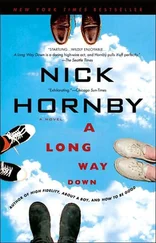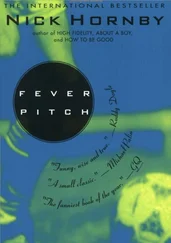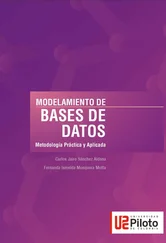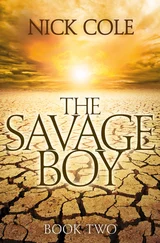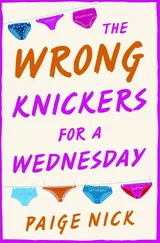The afternoon that I arrived in Oelwein, Clay Hallberg’s friend Nathan Lein met me at the Super 8 motel. For forty years, Nathan’s parents have farmed and raised livestock on 480 acres north of town. Following law school in Indiana, Nathan returned home to take the job of assistant Fayette County prosecutor. On our way to the police station, Nathan drove by what he described as several working meth labs on the pretty, oak-lined streets that fill out Oelwein’s residential neighborhoods, where the hand-laid stone houses date back in some cases 120 years. We passed Amishmen coming to town in their buggies, the Rent-a-Reel movie rental store, and the farm co-op. Two blocks farther on, Nathan pointed out his favorite restaurant, a drive-in burger joint called EI-EI-O’s, which had recently closed. On the boarded-up windows, the owner had scrawled in red spray paint, “Make Offer—Please!”
The Oelwein Cop Shop, as the police station is known, is a nondescript 1960s-era brick building by the railroad tracks, one block north of the Chicago Great Western round house. Inside, past the blue-lit dispatch station, Nathan introduced me to the new chief of police, Jeremy Logan. Logan had recently been promoted from sergeant by Mayor Murphy with mandates to clean up a force with a reputation for impropriety and to spearhead a desperate effort to get Oelwein’s small-time meth manufacture under control. Sitting in his windowless office wearing a bulletproof vest, Logan scrolled through mug shots of Oelwein’s best-known crank dealers and most notorious addicts, one of whom had recently been taken from his home along with fifteen assault rifles and thousands of rounds of ammunition—all while his fifteen-year-old daughter watched. Many of Oelwein’s addicts and dealers, said Logan, hung out at the Do Drop Inn. The idea was that I would go there and, with the blessing of Logan and Nathan Lein, have free range to meet whomever I could. The further hope was that I would get the stories of several addicts and dealers and, with luck, be allowed to follow their lives for the next two years.
It didn’t take long. Two days later, I was in the dank living room of Roland Jarvis’s small house, watching TV with the shades drawn against the bright May sunlight. Jarvis, a thirty-seven-year-old former meatpacking worker, had just smoked some crystalline shards of crank heated on a small piece of tinfoil, the vapor of which he sucked through a glass pipe. As we settled in for the denouement of the mobster movie Goodfellas , Jarvis told his story, principally about the night he blew his mother’s house up while cooking a batch of meth. That night had earned him three months in the burn unit at the University of Iowa Hospital in Iowa City, and had melted most of his hands and face off.
Clay Hallberg is Roland Jarvis’s doctor. Nathan Lein put Jarvis in jail. On the frigid winter night in 2001 when Jarvis blew up the house, he ran screaming onto the street, begging then-sergeant Jeremy Logan—with whom Jarvis had gone to Oelwein High School in the 1980s—to shoot him. Such was the pain of burning alive. And so, too, is this just a small part of the difficulty caused a tiny rural community by the specter of a drug epidemic, which directs life there in a thousand unseen ways. Nathan Lein and his girlfriend, a caseworker with the Department of Human Services, hardly ever went out to dinner anymore, for fear of seeing people that Nathan had put in jail, or whose children his girlfriend had recommended be taken away by the state. Of Roland Jarvis’s four children, one, at thirteen, already needed a kidney transplant, a defect that Jarvis blames on his and his wife’s intravenous meth use while the child was in utero. Summing up the damage done to Oelwein one morning at the Perk, Tim Gilson, the former principal of the nearly bankrupt high school, was almost driven to tears remembering the harsh metrics of the job from which he’d recently resigned in order to finish his Ph.D. in education. “We just didn’t have the money and the staff to help the kids that needed the most of it,” Gilson said, describing the events leading up to asking the police to patrol the halls. “On the one hand, I had an obligation to my teachers, who were frightened of their students. On the other hand, is there anything worse than calling the cops on your own children?” He went on, “We’re in Iowa, for God’s sake. We don’t do that.”
And yet, he did.
The notion that bad things don’t—or shouldn’t—happen in small towns is not uncommon. What Tim Gilson’s disbelief suggests is that nowhere is that conceit more prevalent than in the small towns themselves. By 2005, meth was not just challenging Oelwein’s sense of itself; it had destroyed it. Gilson had much from which to draw for his incredulity. That same year, an analysis by Slate.com showed that U.S. newspapers had used the title “Meth Capital of the World” to describe no less than seventy different American towns, cities, states, and counties, from California to Pennsylvania. Several meth-related murders had become national news, most notable the murder of a nine-year-old girl in Cruthersville, Indiana, who’d inadvertently found a neighbor’s meth lab and was subsequently beaten to death.
Throughout its history, America has panicked over narcotics perhaps more often and more extravagantly than any nation in the world. Measured by its habitual recurrence, drug addiction is our defining morality play. The first act dates to the late 1700s, when alcohol consumption was blamed for everything from sloth to moral incertitude in the new and largely rural nation. Ever since then, most drugs and drug epidemics have been associated with urban life, whether expressed by the Prohibition raids of Chicago and New York speakeasies, LSD in San Francisco in the 1960s, or Wall Street’s and South Beach’s cocaine excesses of the 1980s. What set meth apart was not only the idea that one could make it in the bathtub, but also that the people doing so were poor or working-class rural whites. In that way, the meth epidemic appeared to have neither analog nor precedent in any time since the Revolution.
In truth, all drug epidemics are only in part about the drugs. Meth is indeed uniquely suited to Middle America, though this is only tangentially related to the idea that it can be made in the sink. The rise of the meth epidemic was built largely on economic policies, political decisions, and the recent development of American cultural history. Meth’s basic components lie equally in the action of government lobbyists, long-term trends in the agricultural and pharmaceutical industries, and the effects of globalization and free trade. Along the way, meth charts the fears that people have and the vulnerabilities they feel, both as individuals and as communities. The truly singular aspect of meth’s attractiveness is that since its first wide-scale abuse—among soldiers during World War II—meth has been associated with hard work. For seventy years, the drug more commonly referred to as crank has been the choice of the American working class. It’s in this way more than any other that the story of meth is the story of Oelwein, Iowa, along with that of Roland Jarvis and Tim Gilson and Jeremy Logan. It is also the story of the remarkable, even heroic lengths to which people and communities will go in order to fix themselves.
Some of the deeper meanings of this drug’s hold on America had been evident back in 2004, in Greenville, Illinois. Since the farm crisis of the 1980s, many of the farmers there had long since foreclosed on their land. People left in large numbers. According to Sean and James, in nearby Hagarstown, Illinois, there is but one resident who remains. By 2004, many of the employment opportunities in Greenville and the surrounding area were half-time, with no benefits. Out by Interstate 70, just a couple hundred yards from Ethan’s Place, there were no fewer than seven major chain motels, none of which contributed more than a few minimum wage jobs to the town’s economy. Greenville, once a proud, vigorous farm town, now depended in part on reluctant passersby moving between St. Louis and Indianapolis in order to survive.
Читать дальше

